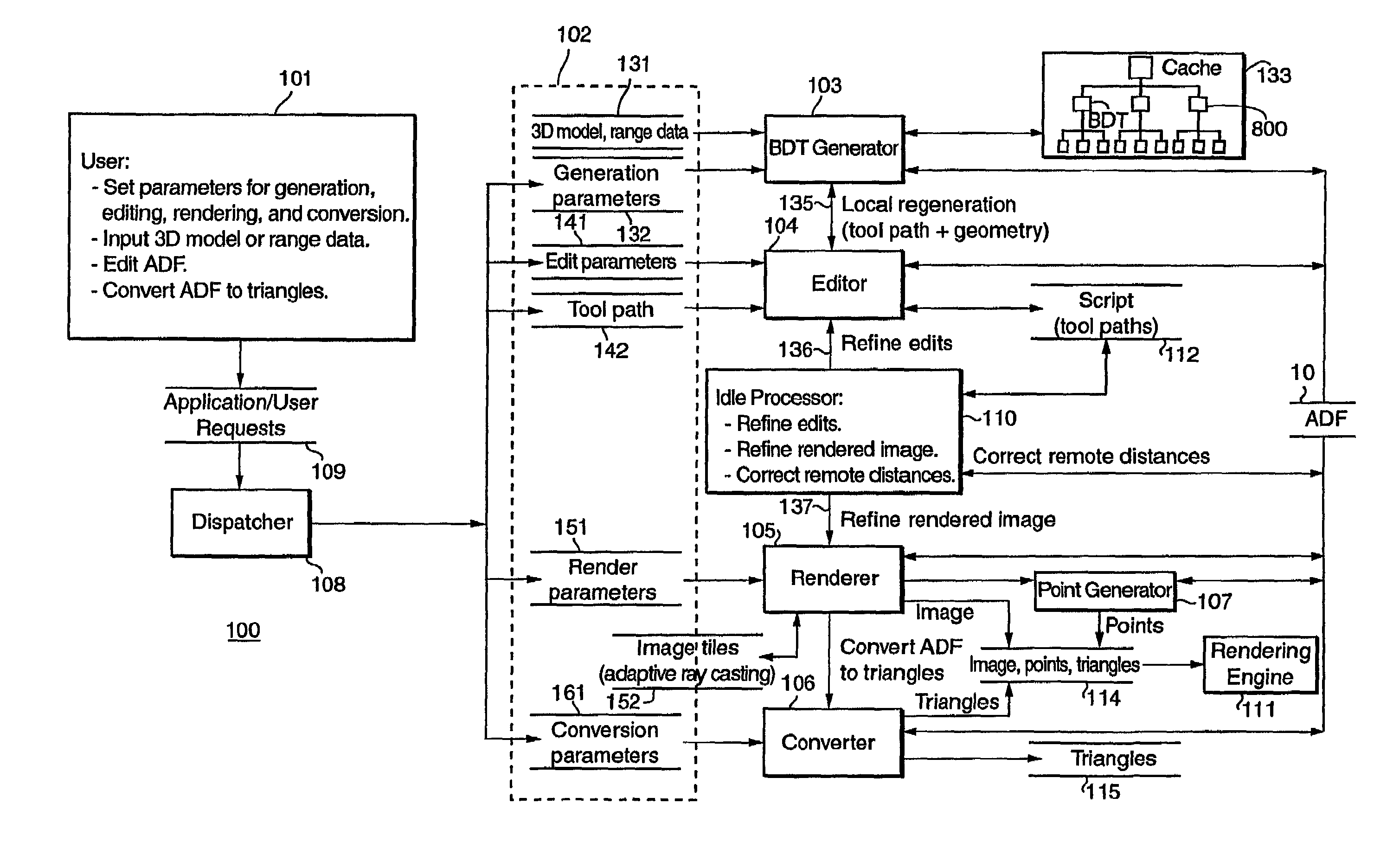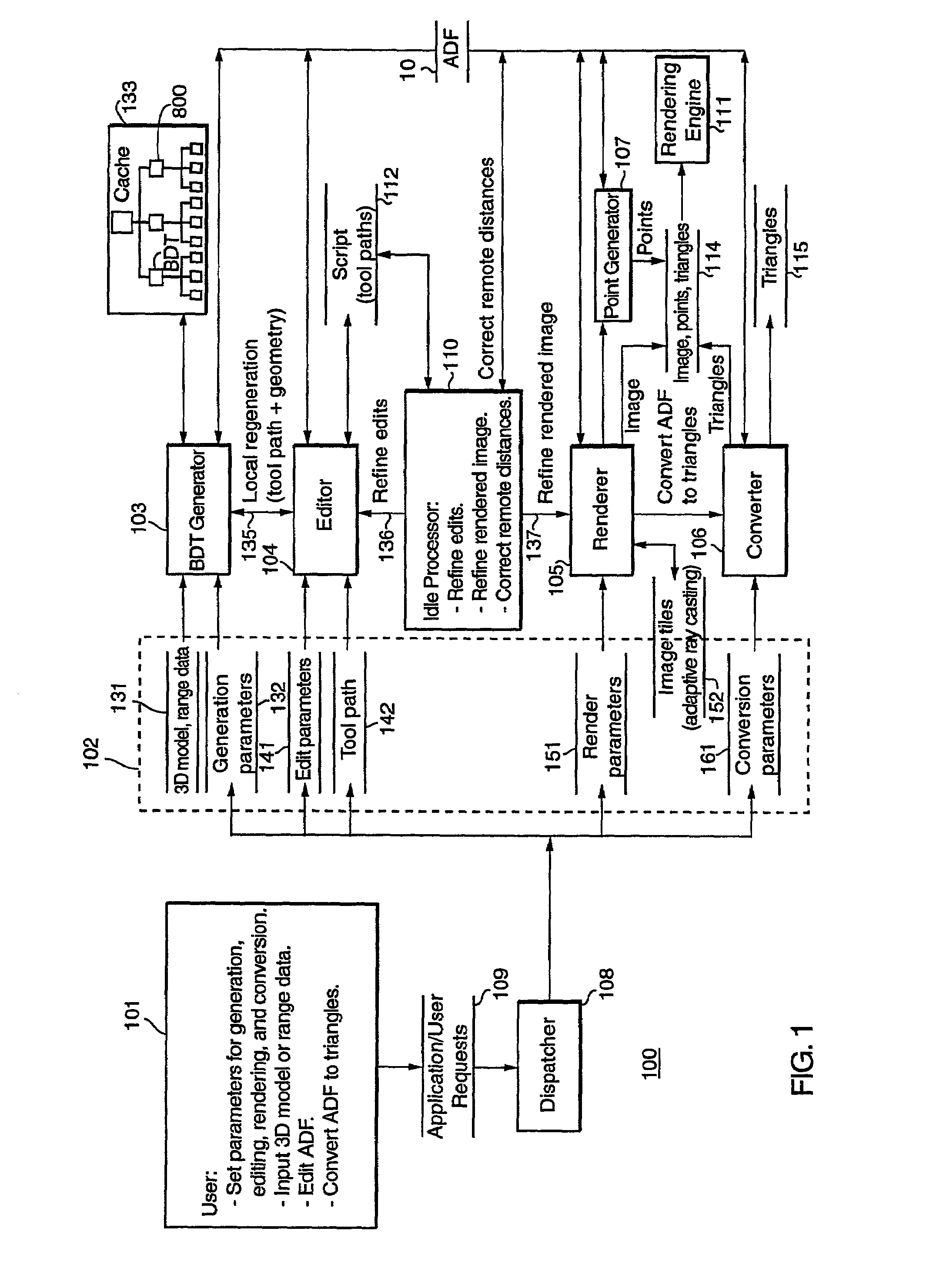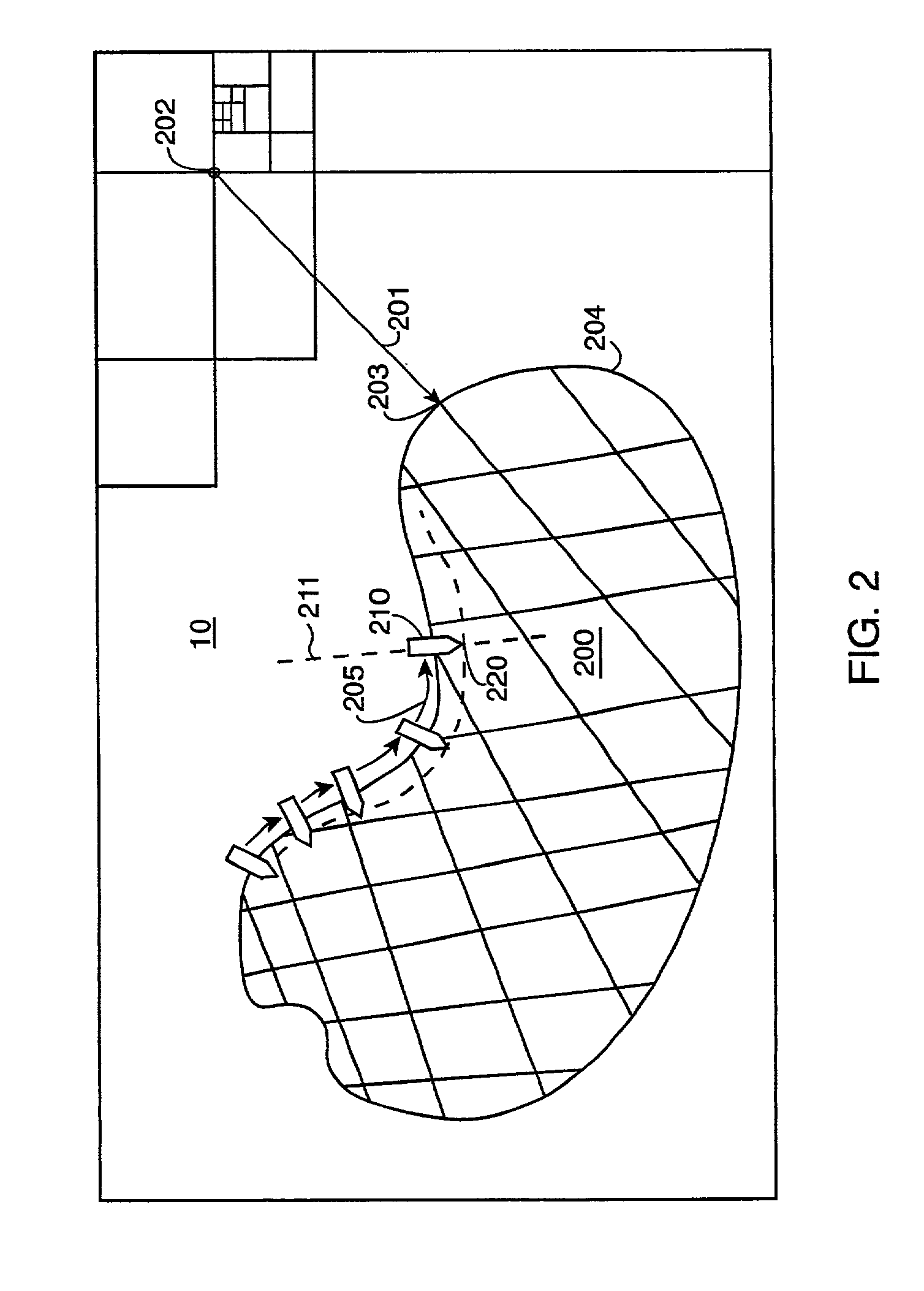System and method for converting range data to 3D models
a range data and 3d model technology, applied in the field of digital objects, can solve the problems of difficult to improve on clay as the ideal modeling medium, design realistic digitized models, and several limitations of digital animation, and achieve the effect of better control
- Summary
- Abstract
- Description
- Claims
- Application Information
AI Technical Summary
Benefits of technology
Problems solved by technology
Method used
Image
Examples
Embodiment Construction
System Structure and Components
[0048]FIG. 1 shows a computerized modeling system 100 according to the present invention. The modeling system, as a basis, uses adaptively sampled distance fields (ADFs) 10 to represent digitized models that can be animated for use by the entertainment industry. The basic data structure of an ADF is described in U.S. patent application Ser. No. 09 / 370,091 “Detail-Directed Distance Fields” filed by Frisken et al. on Aug. 6, 1999, incorporated herein in its entirety by reference. The ADFs 10 are used to represent the digitized models. They can also be used to represent computer implemented tools that operate on the models. It should be noted that the tools can add as well as remove material.
[0049]Basic components of the modeling system 100 include a user interface 101 that provides input data 102 to a bounded distance tree (BDT) generator 103, an editor 104, a renderer 105, a converter 106, a point generator 107, and a dispatcher 108 which responds to ap...
PUM
 Login to View More
Login to View More Abstract
Description
Claims
Application Information
 Login to View More
Login to View More - R&D
- Intellectual Property
- Life Sciences
- Materials
- Tech Scout
- Unparalleled Data Quality
- Higher Quality Content
- 60% Fewer Hallucinations
Browse by: Latest US Patents, China's latest patents, Technical Efficacy Thesaurus, Application Domain, Technology Topic, Popular Technical Reports.
© 2025 PatSnap. All rights reserved.Legal|Privacy policy|Modern Slavery Act Transparency Statement|Sitemap|About US| Contact US: help@patsnap.com



